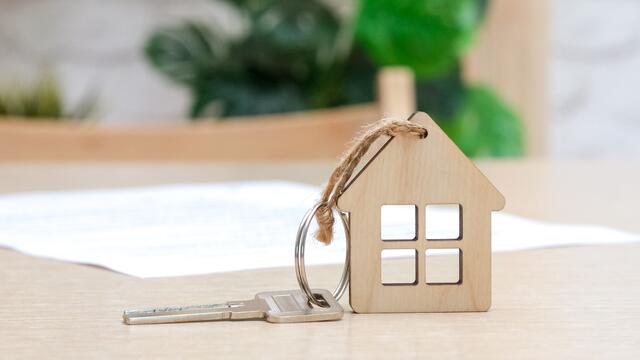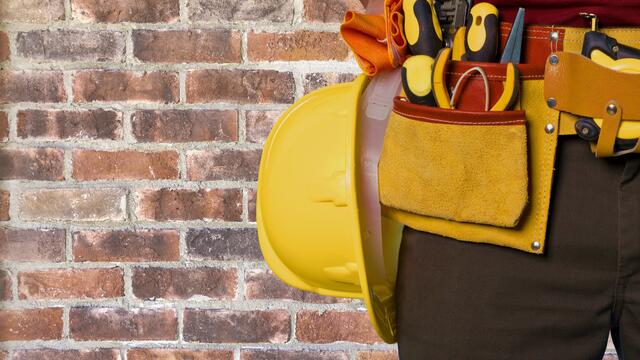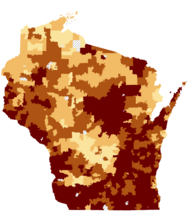Radon Information for Wisconsin
What is radon?
Radon is a radioactive gas that comes from the natural breakdown of uranium in the ground. It is a natural part of the air we breathe and is the largest source of an average person's exposure to background radiation. While we are always exposed to very low levels of radon, breathing in high levels of radon can cause lung cancer. This typically happens when radon enters through a building's foundation and builds up to high levels in the indoor air. Exposure to high levels of radon is the second leading cause of lung cancer, after cigarette smoke.
About 1 out of 10 homes in Wisconsin has high radon levels. You can't see or smell radon, so testing is the only way to know if you are being exposed to high levels. Test for radon in places where people spend a lot of time: homes, child care centers, schools, and workplaces.
Test
Radon test kits are inexpensive, accurate, and widely available. You can buy a test kit for $10-$30 online, at your local hardware store, or through your regional Radon Information Center. Many centers provide test kits for free or reduced cost and are staffed with professionals that can help answer all your radon questions. Visit "Testing for Radon" for more information.
Fix
If your radon levels are high (above 4 pCi/L), a contractor can help lower them by installing a radon mitigation system. The contractor will install a pipe through your building's foundation. The pipe pulls radon gas from the soil below the foundation and vents it to the outside air, using a fan. In new buildings with piping already installed, a contractor might add a fan to turn the passive system into an active one. Find a contractor to help install a radon mitigation system.
Save a life
Radon is the second leading cause of lung cancer in the United States and the leading cause of lung cancer among nonsmokers. An estimated 21,000 people die each year in the United States from lung cancer due to radon exposure. People who smoke or vape are at a greater risk. If you live in a home with high radon, smoking raises your risk of lung cancer by 10 times. Protect yourself from radon exposure and get help to quit smoking or vaping.
Homeowners, renters, and landlords
We recommend that all Wisconsinites test their home for radon, and mitigate if needed.
For homeowners:
- Consumers Guide to Radon: How to Fix Your Home (PDF)
- Wisconsin Home Buyers and Sellers Brochure, P-01139 (PDF)
For renters and landlords:
- A Radon Guide for Tenants
- Landlord Tenant Guide: See page 2, under “Code violations and conditions affecting habitability (ATCP 134.04(2))”
Child care providers and school administrators
For most school children and staff, the second largest contributor to their radon exposure is likely their school or child care environment. Children have smaller lungs and faster breathing rates, which increases the dose of their radon exposure.
Testing for radon is the first step in protecting child and employee health.
Health care providers and health educators
Health care providers and health educators are trusted messengers amongst their patients and community.
Talk with your patients about radon.
Contractors
Contractors play a key role in radon testing, as well as ensuring that radon mitigation systems are installed effectively, following standards.
Learn how to get certified as a radon measurement and mitigation professional.
Keep certifications up to date by obtaining continuing education credits.
Stay up-to-date with best practices in radon mitigation and radon resistant new construction.
Realtors
Realtors educate homebuyers about radon and help clients access testing and mitigation. Radon testing is not required for real estate transactions in Wisconsin but is highly recommended. Talk with your clients about radon.
Community Advocates
Many people don't know about radon - despite it being a leading cause of lung cancer.
Help get the word out, and talk with your community about radon.
Videos about radon
- Radon 101 Webinar: Recorded in December 2021, this webinar was designed to assist local public health professionals' response to questions about radon from community members. Staff from Wisconsin Department of Health Services Indoor Air and Radon Program provided an overview of radon measurement and mitigation basics and answered questions from local public health staff.
- Radon and Your Health Webinar (in Spanish): This Spanish-language webinar was hosted by EPA and was recorded in January 2023. Topics include the health effects of radon, federal efforts to promote radon testing, and examples from Georgia's radon education program.
View our interactive map
View our interactive map of radon test results to see areas where homes and other buildings have tested high for radon.
Note that this map is for informational purposes only and should not be used to determine the risk of indoor radon levels for any individual home or building. The risk of radon exposure and vary greatly between homes or buildings within very close proximity.
The only way to know your radon level is to test. The Wisconsin Radon Program recommends that every home and building be tested for radon to determine the risk of exposure and need for mitigation.
Questions?
Experts are available statewide to answer your questions and provide test kits to the general public. Get in touch with a radon expert by contacting your regional Radon Information Center or by calling 1-888-LOW-RADON (1-888-569-7236).







